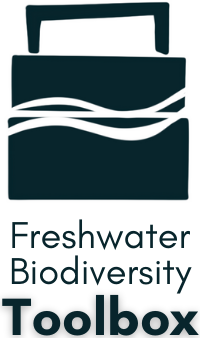

Alarming declines in freshwater biodiversity have been recorded around the globe including in Canada and there is a need for immediate action to not only halt the decline but to reverse it by addressing threats. The Freshwater Biodiversity Toolbox was developed by the Canadian Centre for Evidence-based Conservation (CEBC) to equip any knowledge user or generator of freshwater sciences, including decision-makers and practitioners, with reliable tools for addressing persistent freshwater biodiversity threats.
The toolbox, composed of evidence syntheses and their associated scores from two appraisal tools, ensures that decision-makers and practitioners have access to the latest, most comprehensive, and reliable evidence syntheses – information that they may otherwise not have time to compile and distil.
To develop the toolbox, the CEBC assembled relevant evidence syntheses that have been conducted for freshwater management interventions and appraised their reliability and relevance to Canadian freshwater systems to inform users of the level of uncertainty in their application.
Ways to use the toolbox
Each synthesis in the database will be accompanied by two sets of scores, one from the Collaboration for Environmental Evidence Synthesis Appraisal Tool (CEESAT) and the other from the Relevance and Applicability of Evidence Syntheses to Canada Appraisal Tool (RASCAT).
CEESAT was developed by the Collaboration for Environmental Evidence (CEE) with the goal of identifying the most robust and reliable reviews of evidence relevant to the user’s needs (e.g., for integration into policy and practice); and gaps and limitations in data and reviews. For each of the 16 criteria, an evidence review is rated along a 4-point ordinal colour scale from most reliable to least reliable, as either: Gold, Green, Amber, or Red (see icons below).
CEESAT has been used by the CEE to develop CEEDER, an open access evidence service to help evidence consumers find reliable evidence reviews and syntheses to inform their decision making. While CEESAT was used for this Freshwater Biodiversity Toolbox, any scores shown on this website are independent of CEE and have not been verified by the CEEDER Review College.
RASCAT employs the same ratings as CEESAT (i.e., Gold, Green, Amber, or Red), with the addition of a Not Clear (NC) rating when the information needed to score the criteria is not present in the paper. The RASCAT was developed by the CEBC team and provides a point-by-point appraisal of the relevance and applicability of studies to Canadian ecosystems, based on criteria such as climate, habitat, and species.
When looking at an article, hover over each of the ratings to see further information specific to that criteria.
Click here to see the full list of CEESAT and RASCAT criteria.
The development of this toolbox was supported by the Social Sciences and Humanities Research Council through a Knowledge Synthesis Grant. Additional support was provided by the Natural Sciences and Engineering Research Council of Canada and the Canada Research Chairs Program.
The CEBC would like to acknowledge all those involved in the creation of this toolbox including: Jessica Reid, Jordanna Bergman, Andrew Kadykalo, Jessica Taylor, William Twardek, Trina Rytwinski, Auston Chhor, Acacia Frempong-Manso, André Martel, Nicolas Lapointe, Joseph Bennett, Vivian Nguyen, Andrea Reid, Jerome Marty, Stacey Robinson, Andrew Drake, Amanda Winegardner, Irene. Gregory-Eaves, Mark Taylor, John Smol, Irena Creed, Constance O’Connor, and Steven Cooke.
We would appreciate any feedback about the database. For inquiries about the toolbox, please fill out the contact form at the bottom of this page.
Contact:
[email protected]
[email protected]




